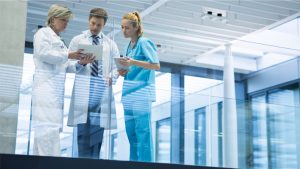 Steve Zanakis |
If your company constantly looks for ways to attract new customers and secure their loyalty—and what company doesn’t—you’ve probably undertaken a customer satisfaction survey at some point. Has it worked to your satisfaction?
Often, such a survey doesn’t work, and there are a number of reasons for that.
“Many surveys fail because they use poor measurement schemes, do not validate the instrument, do not identify appropriate quality dimensions, present average results without determining the importance of each question, do not segment results by product type or benchmark against competitors, and confuse loyalty with satisfaction,” said Steve Zanakis, professor, Department of Decision Sciences and Information Systems in the College of Business Administration.
To improve companies’ odds of keeping customers happy—a task that takes far less effort and money than capturing new customers—the Knight Ridder Center for Excellence in Management in the college has launched a new service. It includes two components, allowing companies to do one or both depending on their needs.
 Step one: delivering a professional presentation that shows why good surveys succeed and weak ones falter.
Step one: delivering a professional presentation that shows why good surveys succeed and weak ones falter.
As a first step, Zanakis, who designed the Strategic Customer Satisfaction Survey, will make a complimentary presentation that outlines the surveying procedure, describes best and worst practices, and sets out the consequences of surveys that neglect to factor in the value dimension, which he considers to be all important.
“I use one of our cases, a major bank, whose questionnaire showed that customers were least satisfied with the cost of services,” he said. “However, the importance that customers attached to that area was only eight percent. Based on a survey that did not take value into account, the bank could have set out to reduce costs to please customers—a rather poor strategic decision because other service areas were perceived to be much more valuable by its customers.”
Step two: designing and analyzing the results using proven statistical tools.
After hearing the informational presentation, some businesses may feel they have what they need to take next steps. Others can engage the Knight Ridder Center to help them design an effective survey and apply extensive statistical analysis to uncover the significance of the results.
“We have a way to obtain information about how much a customer values a particular area without increasing the questionnaire’s size—a key differentiator in the way we conduct the process.”
—Steve Zanakis, professor, Department of Decision Sciences and Information Systems
“A good questionnaire should fit on one page, with questions grouped logically around five or so different dimensions,” Zanakis said. “We have a ten-step process that enables us to create a survey building on those the company may already use. We have a way to obtain information about how much a customer values a particular area without increasing the questionnaire’s size—a key differentiator in the way we conduct the process. We also can segment the data—such as by product, branch, or whatever the company wants to measure—and can benchmark the company over time and against competitors to see if it achieves its targets.”
Thanks to the level of statistical expertise the college can offer, a client company can count on a validated questionnaire and an accurate analysis of the data along both the performance and value dimensions. The final results are presented in a report.
Service supports Knight Ridder Center’s commitment to excellence in management.
“This is a very helpful service the college can offer to the business community and fits in with the mission of the Knight Ridder Center for Excellence in Management, among whose goals are to undertake consulting and educational activities that promote excellence in management,” Zanakis said.
If you would like to learn how the right kind of customer satisfaction survey can help you strengthen your customer—or supplier—relationships, contact Zanakis at Zanakis@fiu.edu or Deanna Salpietra, research coordinator, Knight Ridder Center at dsalpiet@fiu.edu. A brochure that explains the features of the service, and the benefits that result, is posted at http://krcem.fiu.edu/Customer%20Satisfaction%20Brochure.pdf.




